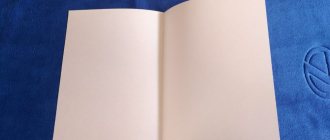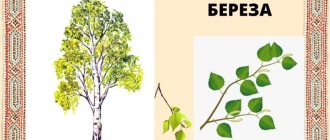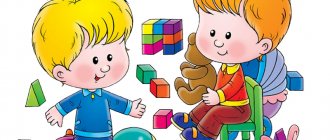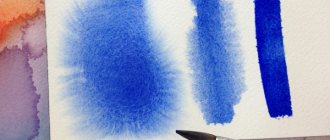Scratching: history and features of technology
Scratching, or waxography, is a technique of scratching an image on a specially prepared base. It came to Russia from France a hundred years ago and immediately became popular among artists, because in the art of that time everything new, unusual, even fantastic was highly valued. Even earlier, in the 13th century, the sgraffito technique was known in Italy. The craftsmen applied several layers of plaster of different colors to the wall, and then, using special scrapers, scratched images into them so that the lower ones appeared from under the upper levels, forming beautiful paintings that covered the entire wall. It is sgraffito that is considered the predecessor of grattography.
The secret of grattage paintings is not in the paints and brushes, but in how the background was prepared and what patterns were scratched on it. Accordingly, the artist’s tools differ from the usual ones. For creativity you will need:
- a sheet of thick paper or cardboard;
- paraffin (candle), wax crayons or oil pastels;
- black ink or gouache (if desired, you can use dark blue, purple, brown);
- liquid soap;
- sponge or wide soft brush;
- a sharp tool for scratching - a special stick, a toothpick, a non-writing pen.
If your child was given a set with a ready-made scratch paper coloring book, do not throw away the plastic pen included in the set after using it. This pointed stick is also useful for home arts.
For preschoolers, different ways of making drawings are suitable, which can be used within the same step-by-step instructions:
- Preparing the work surface and tools. Cardboard or thick drawing paper must be secured to the table, for example, with tape.
- Primer, first stage. Classic grattage assumes the presence of only two colors - black and white. But scratching a design on a black background becomes like real magic if you make the base colored. To do this, you need to completely paint over the sheet with random spots of the selected color scheme. This can be done either with ordinary pencils, and then you will need to carefully rub the entire surface with a candle, or with wax or pastel crayons. Feel free to entrust this operation to your child.
- Primer, second stage. Now the sheet needs to be evenly covered with ink or gouache using the selected tool. Here you will need the help of an adult. Experts in grattography techniques at master classes recommend adding a drop of liquid soap or dishwashing detergent to the paint first so that it goes on smoother.
- Drawing a contour. When the primer is completely dry, you need to mark the boundaries of the future drawing and its largest details, for example, with a thin pencil line.
- Detailing. The most interesting part, for the sake of which everything was started! Using a sharp tool, you need to scratch out thin or wide lines and strokes to gradually achieve the desired design.
Handle the base very carefully: fingerprints and other minor damage will be clearly visible on it. To protect the primer, place a sheet of clean paper under your hand.
Famous artists who worked in the grattage technique
The names of famous scratch artists are well known to connoisseurs of contemporary art. The following masters made the greatest contribution to the development of this technique:
- Max Ernst. The famous German artist did not remain an ardent supporter of grattage for long. Subsequently, he switched to other techniques and throughout his life he never tired of experimenting. But it was Ernst who was the author of the invention of the grattage.
- Joan Miró. The Spanish avant-garde artist also left a bright mark on the history of grattage. All his life he tried to get away from traditional painting methods and find new forms of self-expression.
- Hans Hartung. The German-born French artist modified painting brushes and rollers to create convenient tools for scratching out designs. With their help, he painted his paintings with broad and decisive lines.
- Giovanni Guida. The young Italian artist is rightfully one of the best masters of scratch painting of the 21st century. He works actively in this technique and achieved wide fame at the age of only 25 years.
On the Very Important Lot portal, every visitor has an excellent opportunity to take part in art auctions and purchase antique masterpieces. Here you can inexpensively buy paintings made in various techniques directly from contemporary artists.
How to make a painting in the grattage style: examples
Looking at the work of professionals, I can’t believe that this can be done with your own hands. But even an inexperienced artist is capable of creating an amazing picture - you just need to approach the matter responsibly and show imagination.
View from space
A black background often makes children think of space. To depict the mysterious night sky, the base can be painted over with any colors: from orange to purple. It is best to use oil pastels to then shade the edges of the spots - this will make the transitions between tones smoother. The youngest artists will love the idea of depicting a city at night under the shining stars, whose life is observed by a friendly alien traveling in his “flying saucer”.
Magic tree
Spiral elements look very impressive in the grattage technique. In the composition “Magic Tree” the branches occupy almost the entire space with their large curls. The base is covered with clear transverse stripes of color, smoothly merging into each other: the cool tones from below gradually become warmer as they move to the top. The transitions are clearly visible due to the fact that the tree trunk is quite wide, as are the branches. The difficulty level of this work is average.
Peacock
Small spots of color, randomly located, and thin lines of the design give the effect of a more delicate, subtle play of colors. To depict a peacock, the artist should be patient, this increases the complexity of the painting. Pre-designed head, body and main tail feathers of the bird will help you avoid losing symmetry. When these main lines are ready, you can begin to methodically detail the design: scratching thin lines-beards and scale-like plumage on the neck and chest of the peacock.
There are an infinite number of ideas for creating grattage canvases of varying complexity. To work with a group of children, adults often prepare primed sheets themselves. But for a closer acquaintance with the technique, it is better to divide the lesson into two parts. During the first lesson, young artists will prime the base the way they want, and in the second lesson they will scratch their drawings.
DIY engraving
Drawing is considered an engraving, because the image is obtained by applying strokes without the help of paints, although it would be more accurate to call this technique an imitation of engraving .
On colored cardboard
The simplest scratch paper can be made with your own hands on ordinary colored cardboard. An economical and colorful option is scratch paper on colored cardboard, for example, bright boxes, notebook or magazine covers, etc.
You will need: any colored cardboard, black gouache or acrylic paint, dishwashing liquid, a mixing glass, a candle, a stick for scratching the design.
- Mix cardboard paint: Add 6 teaspoons black paint and 1 teaspoon dishwashing liquid to a glass and stir gently until smooth.
- Take a regular candle and carefully wipe the colored paper pages with wax. The cardboard should be completely covered with a thin layer of wax.
- Take a brush and paint the resulting wax paper with the resulting black mixture. It's best to stock up on printmaking paper so you'll have plenty of material to experiment with!
Scratch stick
Take any stick with a sharp end, such as a wooden skewer. By decorating the stick with washi tape and a wooden bead, the tool becomes a truly chic etching stick.
You can find another scratching device. Even a dry marker works well.
Engraving with wax crayons
- Cover the construction paper with splashes of color using strokes of wax crayons.
- Paint the entire painting black using a soft brush. Not too thick, but not too thin either. If the colors are still showing through after 1 coat, you will need a second coat.
Preparing the Template
In order to introduce children to this technique, you need to prepare in advance. Children are happy to apply a layer of color, but they do not always like to apply gouache or ink. You can do this yourself, and the children will scratch the drawing. Moreover, the drawing can be invented by them, or you can offer a ready-made template, for example, a fish or a bird, help trace it, and the children can scratch the details in the drawing themselves. With older children, you can try scratching on wet gouache. Scratching can be incorporated into many different activities for children. Children are pleased not only with the end result, but also with the magical
Scratch board for children
Festive fireworks - flashes of color on a coal-black sky - are an ideal theme for creative work using the grattage technique.
Night landscapes also look spectacular.
Animals, insects and fish, and almost any motif look beautiful in this technique.









